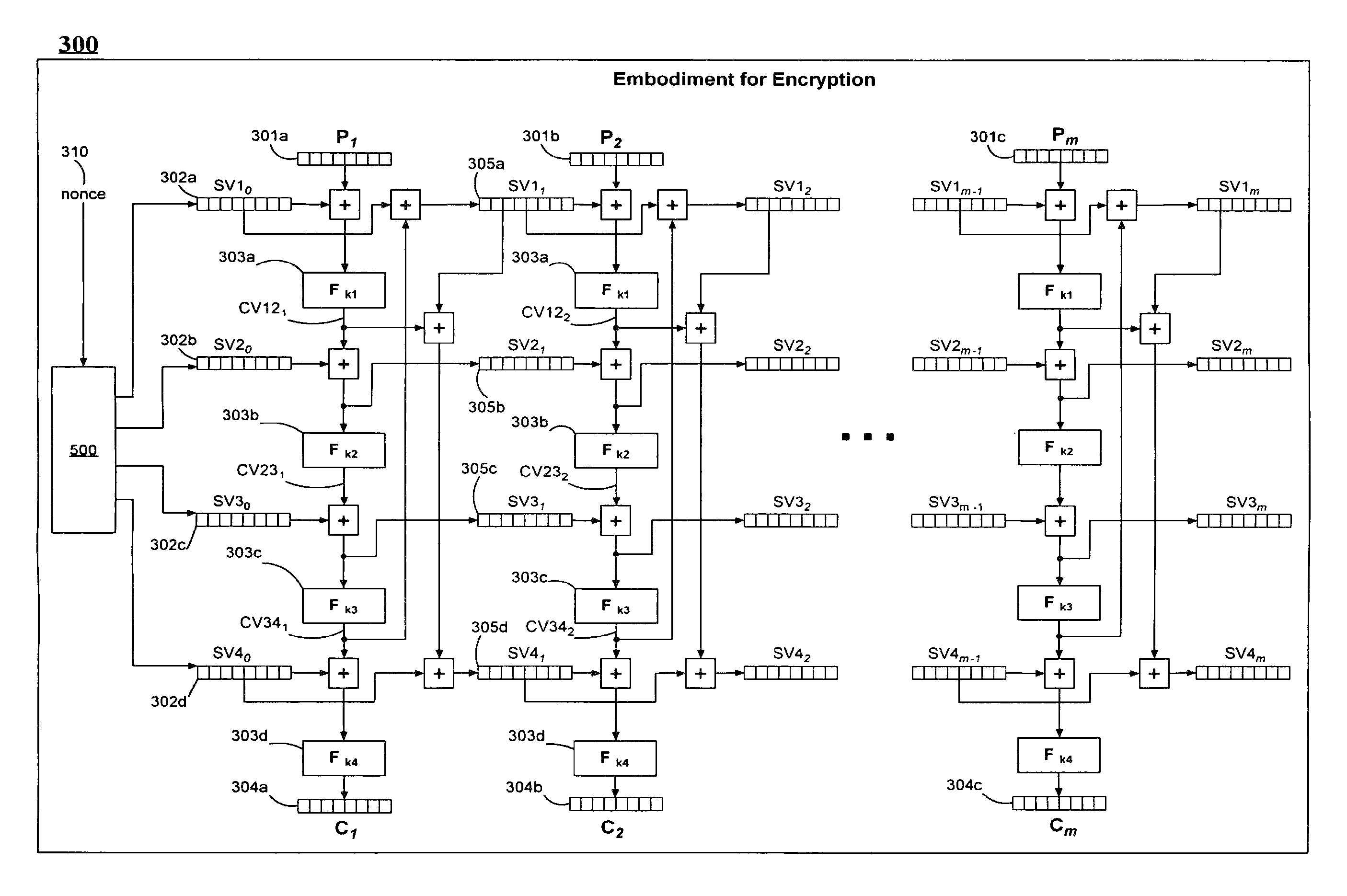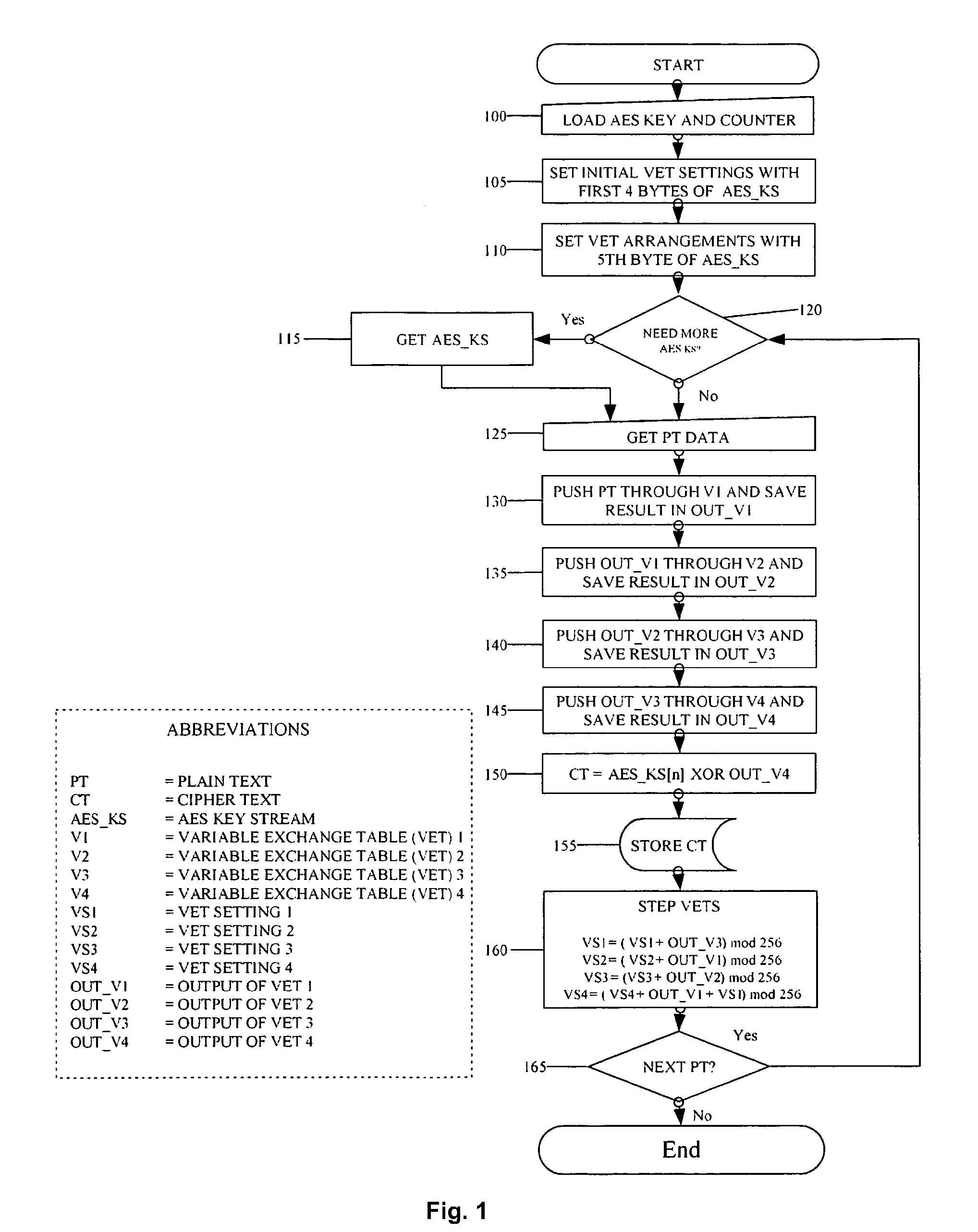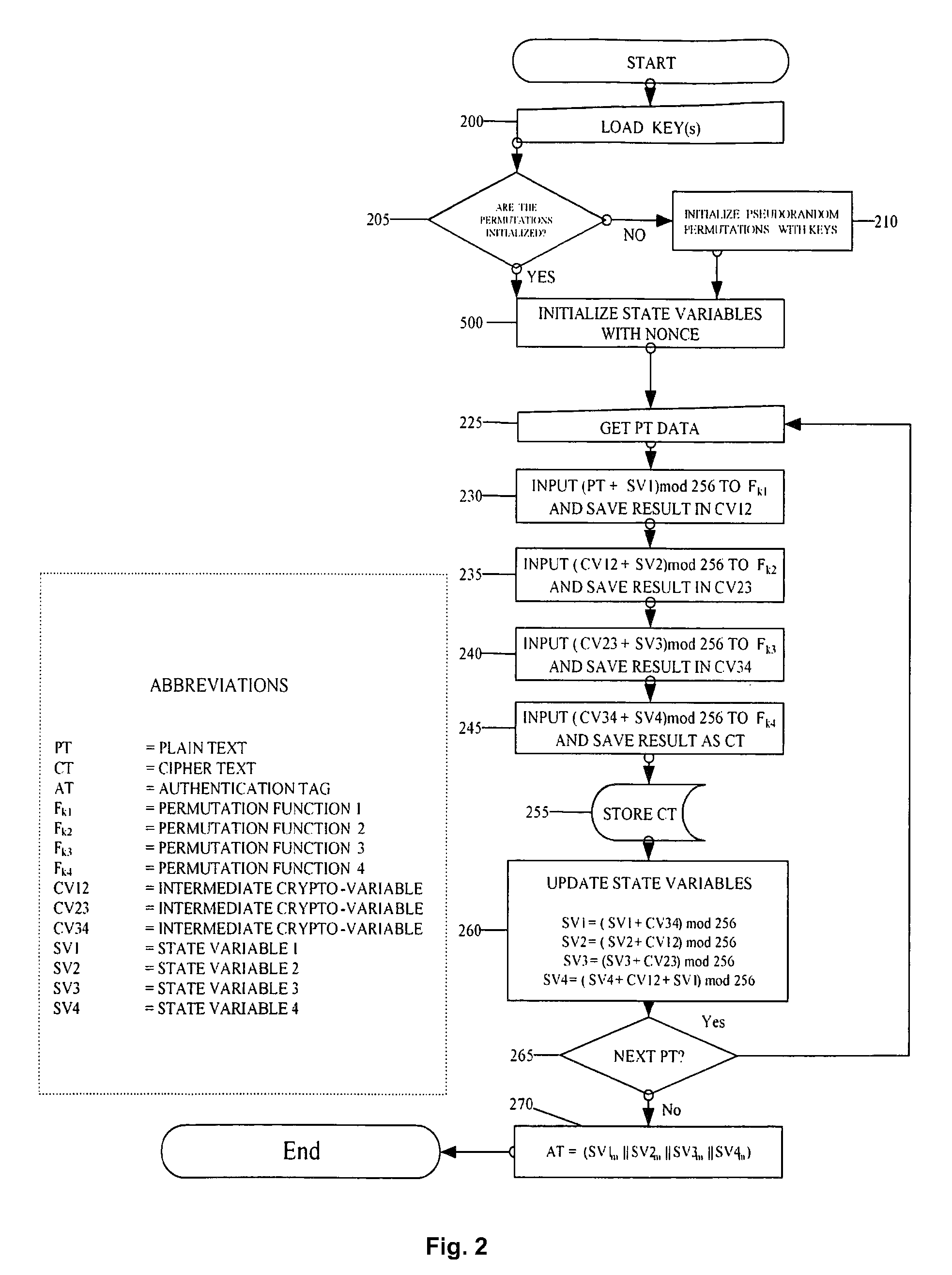System for encrypting and decrypting a plaintext message with authentication
a plaintext message and authentication technology, applied in the field of data communication and storage, can solve the problems unable to ensure the integrity or authenticity of information by authentication tags, and easy to compute but almost impossible to reverse, etc., to achieve low-latency cryptographic protection, the effect of imposing a great deal of latency and overhead
- Summary
- Abstract
- Description
- Claims
- Application Information
AI Technical Summary
Benefits of technology
Problems solved by technology
Method used
Image
Examples
Embodiment Construction
[0031]For a more complete understanding of the described embodiments and for further features and advantages, reference is now made to the following description, taken in conjunction with the accompanying drawings, in which:
[0032]FIG. 1 is a first flowchart in accordance with an embodiment;
[0033]FIG. 2 is a second flowchart in accordance with an embodiment;
[0034]FIG. 3 illustrates an embodiment of an encryption system;
[0035]FIG. 4 illustrates an embodiment of a decryption;
[0036]FIG. 5 illustrates an embodiment for initializing variables using a nonce;
[0037]FIG. 6 illustrates an embodiment for generating an authentication tag from final state variables;
[0038]FIG. 7 illustrates an embodiment for generating a masked authentication tag from a combination of the initial and final state variables;
[0039]FIG. 8 illustrates an embodiment for decrypting and verifying the integrity of the message using a received authentication tag;
[0040]FIG. 9 illustrates an embodiment of the encryption metho...
PUM
 Login to View More
Login to View More Abstract
Description
Claims
Application Information
 Login to View More
Login to View More - R&D
- Intellectual Property
- Life Sciences
- Materials
- Tech Scout
- Unparalleled Data Quality
- Higher Quality Content
- 60% Fewer Hallucinations
Browse by: Latest US Patents, China's latest patents, Technical Efficacy Thesaurus, Application Domain, Technology Topic, Popular Technical Reports.
© 2025 PatSnap. All rights reserved.Legal|Privacy policy|Modern Slavery Act Transparency Statement|Sitemap|About US| Contact US: help@patsnap.com



